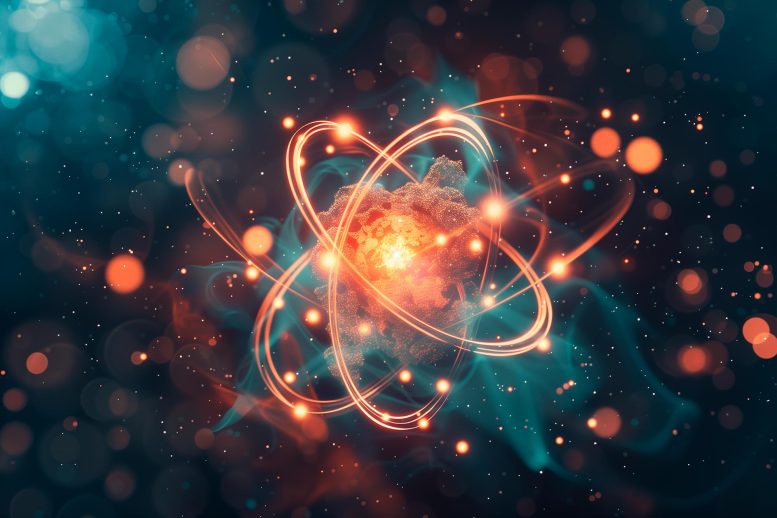
A team of physicists at Purdue University has discovered a new particle, the six-flux composite fermion, expanding the understanding of the fractional quantum Hall effect beyond the known two-flux and four-flux states. This significant finding highlights the critical role of high-quality semiconductor materials and supports the advancement of quantum physics research.
If the fractional quantum Hall regime were a series of highways, these highways would have either two or four lanes. The flow of the two-flux or four-flux composite fermions, like automobiles in this two- to four-flux composite fermion traffic scenario, naturally explains the more than 90 fractional quantum Hall states that form in a large variety of host materials.
Physicists at Purdue University have recently discovered, though, that fractional quantum Hall regimes are not limited to two-flux or four-flux and have discovered the existence of a new type of emergent particle, which they are calling six-flux composite fermion. They have recently published their groundbreaking findings in Nature Communications.
Gabor Csathy, professor and head of the Department of Physics and Astronomy at the Purdue University College of Science, along with Ph.D. students Haoyun Huang, Waseem Hussain, and recent Ph.D. graduate Sean Myers, led this discovery from the West Lafayette campus of Purdue. Csathy credits lead author Huang as having conceived, led the measurements, and writing a large part of the manuscript. All the ultra-low-temperature measurements were completed in Csathy’s Physics Building lab. In his lab, they conduct research on strongly correlated electron physics, sometimes referred to as topological electron physics.
Understanding Electron Interactions
Weak interactions of electrons are well established, and the behavior is quite predictable. When electrons interact weakly, the electron is commonly considered the natural building block of the entire system. But when the electrons interact strongly, interpreting the systemic behavior by thinking of individual electrons becomes nearly impossible.
“This occurs in very few instances, like in the fractional quantum Hall regime which we study, for example,” says Csathy. “To explain fractional quantum Hall states, the composite fermion, a very intuitive fundamental building block, comes in different flavors. They can account for a whole subset of the fractional quantum Hall states. But all the fully developed, (i.e topologically protected), fractional quantum Hall states could be accounted for by only two types of composite fermions: the two-flux and four-flux composite fermions. Here we reported a new fractional quantum Hall state that cannot be explained by any of these previous ideas! Instead, we need to invoke the existence of a new type of emergent particle, the so-called six-flux composite fermions. The discovery of new fractional quantum Hall states is scarce enough. However, the discovery of a new emergent particle in condensed matter physics is truly rare and amazing.”
Expanding the Periodic Table of Quantum States
For now, these ideas will be used to expand our understanding of the ordering of the known fractional quantum Hall states into a “periodic table.” It is especially notable to this process that the emergent composite fermion particle is unique in that the electron captures six quantized magnetic flux quanta, forming the most intricate composite fermion known to date.
“The numerology of this complicated physics puzzle requires quite some patience,” says Haoyun Huang, Csathy’s PhD student. “Take the nu=2/3 fractional state as an example. Since 2/3=2/(2*2-1), the nu=2/3 state belongs to the two-flux family. Similarly, for the nu=2/7 fractional state, 2/7=2/(2*4-1), so this state belongs to the four-flux family. In contrast, the fractional states we discovered closely relate to 2/11=2/(2*6-1). Before our work, no fully quantized fractional quantum Hall state was seen that could be associated with six-flux composite fermions. The situation was completely different on the theory front: The existence of these kinds of composite fermions was predicted by Jainendra Jain in his highly influential theory of composite fermions published in 1989. The associated quantization was not observed during these 34 years.”
The material used in this study was grown by a Princeton University team led by Loren Pfeiffer. The GaAs semiconductor electrical quality played a huge role in the success of this research. According to Csathy, this Princeton group is leading the world in growing the highest quality GaAs-based materials.
“The GaAs they grow is very special, as the number of imperfections is astonishingly low,” he says. “The combination of low disorder and the ultra-low-temperature measurement expertise in the Csathy lab made this project possible. One reason we were measuring these samples is that very recently the Princeton group has significantly improved the quality of the GaAs semiconductor, as measured by the tiny amounts of defects present. These improved samples will, for sure, continue to constitute a playground for new physics.”
This exciting discovery is part of ongoing research by Csathy’s team. The team continues to push the limits of discovery in their persistent pursuit of topological electron physics.
Reference: “Evidence for Topological Protection Derived from Six-Flux Composite Fermions” by Haoyun Huang, Waseem Hussain, S. A. Myers, L. N. Pfeiffer, K. W. West, K. W. Baldwin and G. A. Csáthy, 17 February 2024, Nature Communications.
DOI: 10.1038/s41467-024-45860-5
Low-temperature measurements in Csathy’s lab were supported by the U.S. Department of Energy, Office of Science, Basic Energy Sciences program, under Award No. DE-SC0006671. Sample growth efforts of the Princeton team were supported by the Gordon and Betty Moore Foundation Grant No. GBMF 4420 and the National Science Foundation MRSEC Grant No. DMR-1420541.

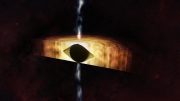
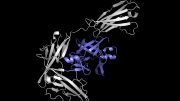

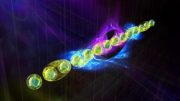
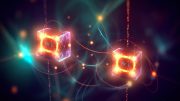
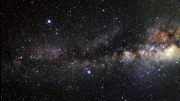
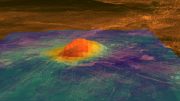

I wonder are there more, looking at a interactive periodic table the more complex the element the more paths of electrons, layers with different amounts of orbiting electrons.
Bazinga
Although the scenery along the way is beautiful, scientific research guided by erroneous theories will never allow humanity to see the scenery at the end of space-time continuum. What researchers observe in experiments is always superficial, not essential. The essence of things requires scientific theories to sublimate. The imagination about fermions and bosons is amazing.
Today, we have already entered the era of the internet. With the help of artificial intelligence and big data, discussions on scientific knowledge have become open and transparent. However, a group of editors of so-called academic journals (such as Physical Review Letters, Nature, Science, etc.) are self righteous, self proclaimed, fooling the public, lack remorse, and mystifying themselves. They only care about their own so-called sufficiently high priority rating, general significance, discipline, novelty, etc., and do not care about what science and pseudoscience are.
Science and pseudoscience are not determined by a publication, an organization or a person, nor by you or me, but by mathematics the final say. Physical models must be based on mathematics or mathematical models in order to be scientific, convincing, and in accordance with natural laws.
The origin of geometry lies in the concerns of everyday life. The branch of geometry (mathematics) known as topology has become a cornerstone of modern physics. Topological vortex and antivortex are two bidirectional coupled continuous chaotic systems. They exhibit parity conservation, charge conjugation, and time reversal symmetry. The synchronization effect is extremely important in their interactions. The synchronization effect of the superposition, deflection, and twisting of multiple or countless topological vortices will make spacetime motion more complex. To understand this complex world, physics should respect the authenticity of topological vortex in low dimensional spacetime, rather than simply relying on a few formulas, numbers, or imagined particles.
Spin is a natural property of topological vortices. Spin is synchronized with energy, spin is synchronized with gravitation, spin is synchronized with time, spin is synchronized with evolution. The perpetually swirling topological vortices defy traditional physics’ expectations. One physical properties of topological vortices is them to spontaneously begin to change periodically in time, even though the system does not experience corresponding periodic interference. Therefore, in the interaction of topological vortices, time is both absolute and relative,and physics often requires treating space and time at the same level.
Low-dimensional spacetime matter is the foundation of high-dimensional spacetime matter. Low-dimensional spacetime matter (such as topological vortex) can form new material structures and derive more complex physical properties via interactions and self-organization. It is extremely wrong and irresponsible to imagine low dimensional spacetime matter using high-dimensional spacetime matter,such as a cat in quantum mechanics.
Science must follow mathematical rules. For example, the Standard Model (SM) is considered to be one of the most significant achievements of physics in the 20th century. However, the magnetic moment of μ particle is larger than expected, revealed by a g-2 experiment at Fermilab, suggests that the established theory (such as SM) of fundamental particles is incomplete. Furthermore, the SM omitting gravitation, it not involved the time problem and when the particle movement starts. Mathematics is the foundation of science. Physics must respect the scientific nature of mathematics and mathematical models. The SM must be based on mathematical models in order to be scientific, convincing, and in line with natural laws.
I hope researchers are not fooled by the pseudoscientific theories of the Physical Review Letters (PRL), and hope more people dare to stand up and fight against rampant pseudoscience.
The so-called academic journals (such as Physical Review Letters, Nature, Science, etc.) firmly believe that two high-dimensional spacetime objects (such as two sets of cobalt-60) rotating in opposite directions can be transformed into two objects that mirror each other, is a typical case of pseudoscience rampant.
If researchers are really interested in Science and Physics, you can browse https://zhuanlan.zhihu.com/p/643404671 and https://zhuanlan.zhihu.com/p/595280873.
The Physical Review Letters (PRL) is the most evil, ugly, and dirty publication in the history of science. Nature and Science have been influenced by Physical Review Letters (PRL) and are even more notorious. The behavior of these pseudo-academic publications has seriously hindered the progress and development of human society in science and technology.
I am well aware that my relentless repetition can make some people unhappy, but in the fight against rampant pseudoscience, that’s all I can do.
Math is also a language we fit reality into. The mistake is to believe we can actually ever tptotally understand Realiy. Sciece is just humans speculating because we are growing mire aware of our limitations. Accepting them is not mabdatoty when we do have breakthroughs of ispiration occur to imganative people who get science is tool touesed to keep prying deeper. We can experience realuty and descrbe it as best we can can guesss and then create equations that capture descriptions of reality pattial plotting the grphs such equations alliw we see probale projections.
Yet by tying together variety of graphic forms and known relationshpswith between same vaiables, we can can build some very usefulteorectical potential ssuperstructure from alk the many bits of iformation pouring in from micro a b d macro lenzing or light and energy bendiñg. hiw reality is sharing information gleened from REALIYTS’ CONSCIOUS TOTALITY. What Eienstien coined as CREATIVE COSMIC CONCIOSNESS AS THE DESIGNER AND CONTINUAL AWARENESS THAT BRINGS THE ETHERIC OR PERHAPS EVEN SPIRIT EMERGINGING JUST AS WE SWITCH PERSPECTIVES FROM SEEING WAVES AS PARTICALS ALLOWING THE
COSMIC INFINITE INSTANT WHICH IS PLENTY WITH ÌT’S APPARANT I R INFINFINATE ORIGIN. BETWEEN WEBB TELESCOPE LOOKING OUT AND ECTRON MICROSCOPE LOOKING IN, PIECING TOGETHER THE CREATING OF REALITY’S ABSOLUTELY AMAZING APPEARANCE AS WELL DESISGNED SYSTEMATIC AND SYMETRICAL DYNAMO FOR BRINGING EMERGENT BEHAVIOR INTO SUSTAINABLE EXISTENCE.
INFINITE BECOMES FINATE FOR THE SINGLE INSTANT HAPPENIBG NOW.
JUST ENOUGH IT SEEMS.
To be precise, what God plays is two spinning coin. However, until you see the coin, you will not be able to determine whether you are seeing a Left-handed or right-handed spin coin.
According to topological vortex gravitational field theory, at the moment of Creation, the geometric shapes of matter and antimatter are consistent. It is only the synchronous effect of countless “spinning coin” that makes spacetime motion more complex.
Therefore, if there really is God, symmetry is God. Symmetry creates the world, symmetry creates all things. The world we see and observe is asymmetric because we can never see or observe the entirety of the world.
The perpetually swirling topological vortices defy traditional physics’ expectations. Please believe in mathematics, geometry, and topology. If you are really interested in science, you can browse the comments of https://scitechdaily.com/science-simplified-what-is-quantum-mechanics/.
Wish you good luck.
Preach on my good man, plz preach on…
{So glad I stumbled across this!}